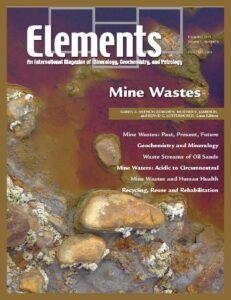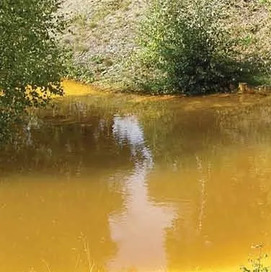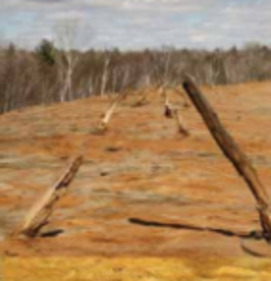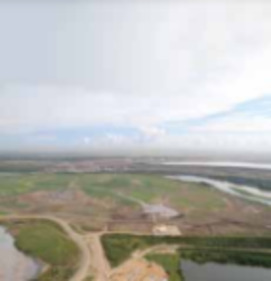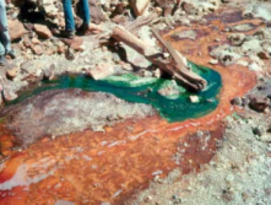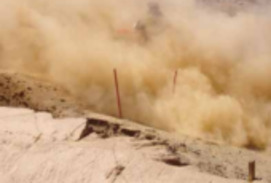
Mine Wastes
Karen A. Hudson-Edwards, Heather E. Jamieson, and Bernd G. Lottermoser – Guest Editors
Table of Contents
Since the dawn of civilization, humankind has been extracting metals and minerals for the production of goods, energy, and building materials. These mining activities have created great wealth, but they have also produced colossal quantities of solid and liquid wastes, known collectively as “mine wastes.” Mine wastes represent the greatest proportion of waste produced by industrial activity. In fact, the quantity of solid mine wastes and the quantity of Earth materials moved by fundamental global geological processes are of the same order of magnitude—approximately sev eral thousand million tons per year. Therefore, the large scale production, secure disposal, and sustainable remediation of mine wastes represent problems of global significance. Over the past 10–15 years, novel geochemical, mineralogical, micro biological and toxicological techniques have led to a much better understanding of the character, weathering mechanisms, long term stability, ecotoxicology, and remediation of mine wastes. This issue of Elements will bring readers up to date with these current findings and will highlight new frontiers for mine waste research.
- Mine Wastes: Past, Present, Future
- Geochemistry and Mineralogy of Solid Mine Waste: Essential Knowledge for Predicting Environmental Impact
- Waste Streams of Mined Oil Sands: Characteristics and Remediation
- Mine Waters: Acidic to Circumneutral
- Mine Wastes and Human Health
- Recycling, Reuse and Rehabilitation of Mine Wastes
Activation Laboratories (Actlabs)
Australian Scientific Instruments (ASI)
Bruker
Energy Frontier Research Center
Excalibur Mineral Corporation
FEI
Geological Society
Rocks & Minerals
RockWare
Savillex
SPECTRO
Springer
Geochemist’s Workbench
v8n1 IMPACT!
Guest Editors: Fred Jourdan (Curtin University) and Wolf uwe reimold (Humboldt University Berlin)
Impact processes are central to the formation and evolution of the solar system and the modification of planetary surfaces. On earth, asteroid impacts played a critical role during earth history; they delivered the constituents of our planet, were responsible for the formation of major ore deposits, and affected life on earth. studying impacts and their effects is a very active field at the crossroads of many scientific disciplines, from mineralogy to environmental science. this issue will focus on the mineralogical, geochemical, and petrological aspects of terrestrial impact structures, and in particular on the latest developments in the relevant fields.
- IMPACT! – BOLIDES, CRATERS, AND CATASTROPHES W. Uwe Reimold (Humboldt University Berlin) and Fred Jourdan (Curtin University)
- The Impact-Cratering Process Gareth S. Collins (Imperial College London), H. Jay Melosh (Purdue University), and Gordon R. Osinski (University of Western Ontario)
- Shock Metamorphism of Minerals Falko Langenhorst (Friedrich Schiller University Jena) and Alex Deutsch (Westfälische Wilhelms Universität Münster)
- Geochemistry of Impactites Christian Koeberl (University of Vienna and Natural History Museum, Vienna), Philippe Claeys (Vrije Universiteit Brussel), Lutz Hecht (Natural History Museum, Berlin), and Iain McDonald (Cardiff University)
- Distal Impact Ejecta Layers: Spherules and More Billy P. Glass (University of Delaware) and Bruce M. Simonson (Oberlin College)
- Dating Terrestrial Impact Structures Fred Jourdan (Curtin University), W. Uwe Reimold (Humboldt University Berlin), and Alex Deutsch (Westfälische Wilhelms Universität Münster)
- Local and Global Environmental Effects of Impacts on Earth Elisabetta Pierazzo (Planetary Science Institute) and Natalia Artemieva (Russian Academy of Sciences)
- Cosmochemistry (February 2011)
- Iron in Earth Surface Systems (April 2011)
- Global Water Sustainability (June 2011)
- When the Continental Crust Melts (August 2011)
- Tourmaline (October 2011)
- Mine Wastes (December 2011)
Download 2012 Thematic Preview
- Impact! (February 2012)
- Minerals, Microbes, and Remediations (April 2012)
- Fukushima Daiichi (June 2012)
- Granitic Pegmatites (August 2012)
- Rare Earth Elements (October 2012)
- Urban Geochemistry (December 2012)
Download 2012 Thematic Preview


